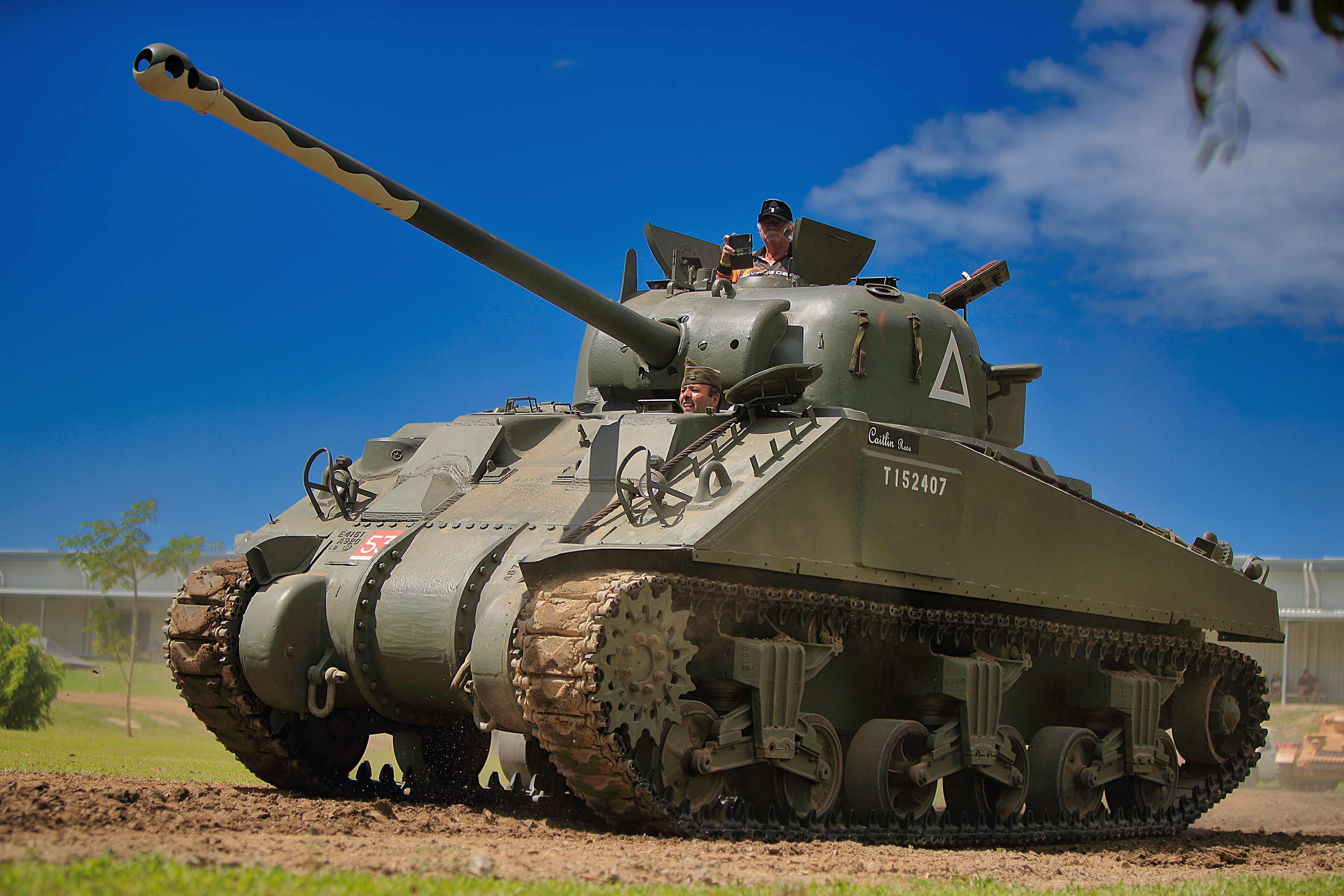The Sherman Firefly was a variant of the famous M4 Sherman tank that saw service during World War II. It was an ingenious modification of the existing Sherman design, resulting in a more capable tank taking on the heavily armored German tanks.
Origin and Design
The Firefly was a British invention developed in response to the need for a tank with greater firepower to counter the formidable German Panther and Tiger tanks. The idea was simple yet effective: mount a powerful British 17-pounder anti-tank gun in the Sherman’s turret.
However, the design process was anything but simple. The 17-pounder was significantly larger than the Sherman’s original 75mm gun, and fitting it into the Sherman’s turret required extensive modifications. These included moving the radio to the hull, adding a new gun mantlet, and even rotating the gun so the breech was facing the back of the turret.
Combat Service
The Firefly made its combat debut on the battlefields of Normandy in June 1944 during the D-Day invasion. It quickly earned a reputation as a German tank killer, able to penetrate the armor of even the fearsome Tiger tank.
Because of their increased firepower, Fireflies were considered valuable targets by the Germans and were often the first tanks targeted in engagements. This led to some Firefly crews camouflaging the distinctive long barrels of their tanks to make them less conspicuous on the battlefield.
Legacy
Though facing many design obstacles and threats in battle, the Firefly was ultimately one of the most successful variants of Sherman tanks. Its ability to take on even some of Germany’s top tanks made it an invaluable weapon during Europe’s final stage of World War II.
The Sherman Firefly stands as an outstanding testament to wartime innovation and adaptation. Today, much like its namesake tank, its legacy can be found in museums and memorials around the globe, serving as evidence of its impact during such a critical point in history.
Why didn’t Americans use the Sherman Firefly?
The U.S. Army didn’t adopt the Sherman Firefly for a few reasons. First, the Firefly was a British modification of the Sherman designed to overcome challenges presented by heavily armored German tanks such as Panther and Tiger tanks. Americans, while still facing these tanks directly, approached this problem differently.
Secondly, when the Firefly debuted, the United States had already started deploying tanks such as the M4A1(76)W and M4A3(76)W, outfitted with a more powerful 76mm gun. While this American 76mm gun didn’t match the firepower of the British 17-pounder found on the Firefly, it nonetheless marked a significant upgrade from the original 75mm gun that came standard on the Sherman tanks.
Finally, adopting the Firefly by the United States would have required significant logistical adaptation. Because British ammunition differed significantly from that available here in America, adding additional layers of complexity to field supply management efforts would have been required for its introduction.
However, it’s important to underscore the Firefly’s significant role in the Allies’ overall success during World War II. Serving as a formidable tool in the arsenal of the British and other Commonwealth armies, it was instrumental in many key tank skirmishes during the final phases of the conflict.
You can find an amazing piece of artwork by Craig Tinder titled “Operation Bluecoat,” that illustrates Shermans of the British 11th Armoured Division gaining the upperhand over units of Germany’s 2nd Panzer Division during Operation Bluecoat. The limited edition canvas print even includes a relic that is a steel fragment was taken from a larger internal metal latch cover from a Sherman tank of the 11th Armoured Division, making it a unique piece of history!
Operation Bluecoat – Sherman Tank Military Art
August 1944 – British Fireflies of the 11th Armoured Division, 29th Armoured Brigade, 23rd Hussars engage elements of the 2nd Panzer Division during Operation Bluecoat. After capturing a vital bridge over the river Souleuvre at Beny Bocage, the British quickly exploited the high ground in the area. Once enemy contact had dwindled, the 23rd Hussars entered the town of La Ferriere-Harang and were promptly mobbed by a local liberation parade.






Share:
Soaring with the Sabres: The F-86 and the Dawn of Jet-Powered Dogfights
The Silent Hunters: A Brief Dive into German U-Boats